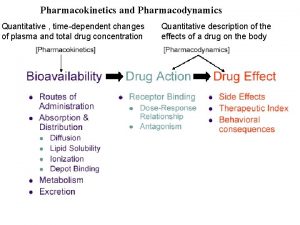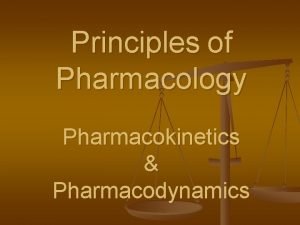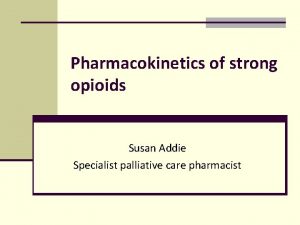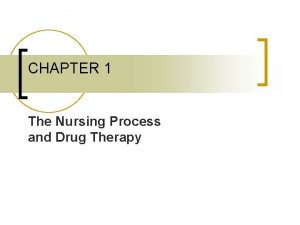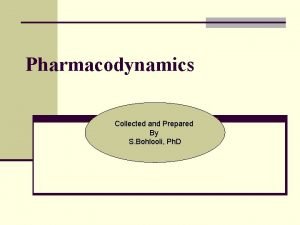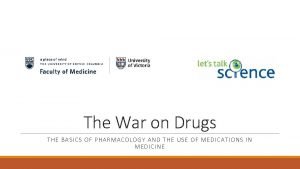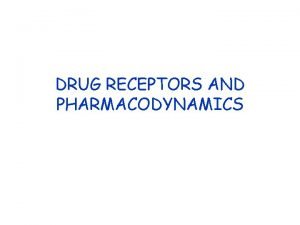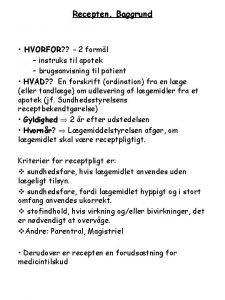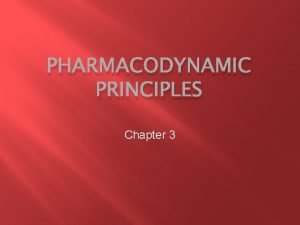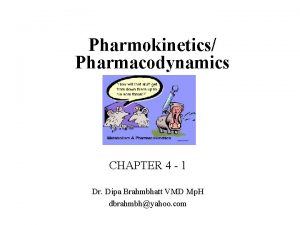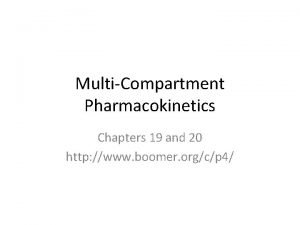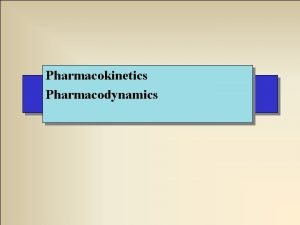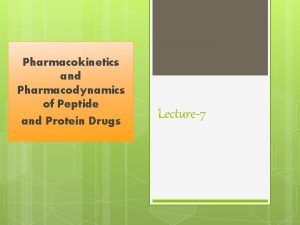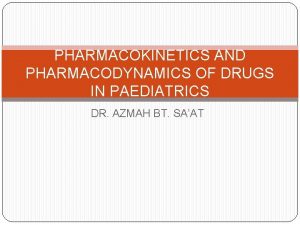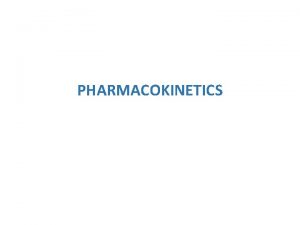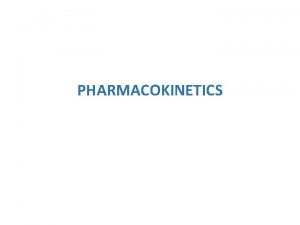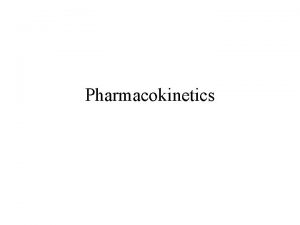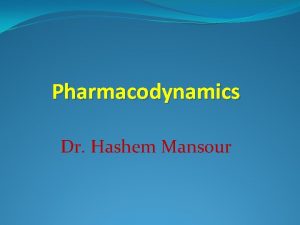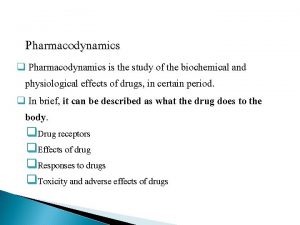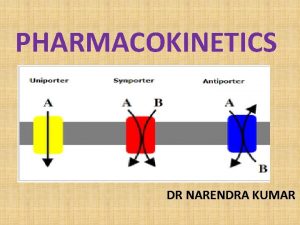Pharmacokinetics Pharmacodynamics Pharmacokinetics Movement of drugs in the












- Slides: 12

Pharmacokinetics & Pharmacodynamics

Pharmacokinetics • Movement of drugs in the body or effect of body on drugs • Four Processes • • Absorption Distribution Metabolism Excretion

Absorption • Depends on intravascular and extravascular route of drug administration • It entails transport of drug across small intestinal epithelial cell membrane. • Transport through membrane also important in other process of pharmacokinetics


Transport through Membrane • Diffusion through paracellular space • Through lipid bilayer • Facilitated diffusion (Carrier mediated transport) • Active transport (Carrier mediated with energy requirement) • Most drug cross membrane through passive means (Lipid bilayer)

Diffusion through Lipid • Factors affecting the transport through lipid can be summarized using Ficks law; C 1 – C 2 x A. PC/T • Permeability Coefficient depends on; Partition coefficient and diffusivity • Part Coefficient depends on pka of drug, p. H of absorption site and blood. They determine degree of ionization

Diffusion through Lipid • Factor related to drug include presence of functional group, mol wgt. of drug. • Based on degree of ionization effective absorption can be det. using H-H equation for weak acid or base. • Assuming p. H of stomach is 1. 4 and Aspirin p. Ka is 3. 4, det. Efficiency of aspirin absorption. • Other factors affecting absorption include; perfusion rate, gastric emptying, Competing reactions and formulation of drug.

Absorption • Absorption can also determine bioavailability • But not the major determinant when drug is absorbed through small intestine. • Bioavailability can be referred to as fractional extent of drug dose carried by the blood to site of action. • Det. Bioavailability if 50% of drug dose is lost at each step of drug between absorption and reaching systemic circulation • Absolute bioavailability in I. V.

p. Ka of Drugs

Route of Drug Admin.

Drug Distribution • The process by which a drug reversibly leaves the blood stream and enters the interstitium (extracellular fluid) and get into the cells or tissues. • The drugs are present in free or bound form and different processes or mechanisms affect their distribution. Compartments for Distribution: • Plasma • Interstitial fluid • Intracellular fluid • Transcellular fluid

Factors Affecting Drug Distribution • Lipid Solubility • Molecular size • Degree of Ionization • Free and Bound Form • Drug Reservoirs • Vascularity • Barrier; placenta, BBB (Pharmacological sanctuaries) • Volume of Distribution • Removal rate and tissue binding
 Pharmacokinetics vs pharmacodynamics
Pharmacokinetics vs pharmacodynamics Difference between pharmacodynamics and pharmacokinetics
Difference between pharmacodynamics and pharmacokinetics Pharmacokinetic definition
Pharmacokinetic definition Define pharmacodynamics
Define pharmacodynamics Inverse agonist examples
Inverse agonist examples Pharmacodynamics
Pharmacodynamics Therapeutic index definition
Therapeutic index definition Pharmacodynamics
Pharmacodynamics Pharmacodynamics
Pharmacodynamics Pharmokinetics
Pharmokinetics Locomotor dance steps
Locomotor dance steps Light gun signals
Light gun signals Multi compartment model pharmacokinetics
Multi compartment model pharmacokinetics
